
-
 History of Religions
History of the 3 Monotheistic religions (Judaism, Christianity and Islam) and of the main different Christianity confessions (Roman Catholicism, Eastern Catholicism and Eastern Orthodoxy, Anglicanism and Protestantism)
History of Religions
History of the 3 Monotheistic religions (Judaism, Christianity and Islam) and of the main different Christianity confessions (Roman Catholicism, Eastern Catholicism and Eastern Orthodoxy, Anglicanism and Protestantism)
-
 Pedagogical Approaches
New pedagogical approaches to teach history of religion
Pedagogical Approaches
New pedagogical approaches to teach history of religion
-
 Role of Religions in Civilization
How to didactically promote among students of different confessions, the capacity of a critical analysis and understanding of the role played by religions in the history of mankind
Role of Religions in Civilization
How to didactically promote among students of different confessions, the capacity of a critical analysis and understanding of the role played by religions in the history of mankind
-
 Interreligious Students’ Competences
Set of teaching contents, to be used by teachers to highlight and valorize the universal values of tolerance and universalisms that all Monotheistic religions and religious texts contain to promote and sustain mutual understanding among students
Interreligious Students’ Competences
Set of teaching contents, to be used by teachers to highlight and valorize the universal values of tolerance and universalisms that all Monotheistic religions and religious texts contain to promote and sustain mutual understanding among students
-
 Managing Multi-Religious Classes
Teaching Sources to help teachers dealing with multicultural and multi-religious classes
Managing Multi-Religious Classes
Teaching Sources to help teachers dealing with multicultural and multi-religious classes
-
 Introduction
A comparative review of the liturgical celebrations, ceremonies and dietary rules existing in the different religions.
Introduction
A comparative review of the liturgical celebrations, ceremonies and dietary rules existing in the different religions.
-
 Celebrations
Description and comparative analysis of the celebrations of different religions and confessions
Celebrations
Description and comparative analysis of the celebrations of different religions and confessions
-
 Ceremonies
Description and comparative analysis of the ceremonies of different religions and confessions
Ceremonies
Description and comparative analysis of the ceremonies of different religions and confessions
-
 Dietary Rules
Description and comparative analysis of the dietary rules of different religions and confessions
Dietary Rules
Description and comparative analysis of the dietary rules of different religions and confessions
Events
The Pathway through Religions project has been promoted trough conferences and articles.
Partnership
-
 Contractual Partners
From this section it is possible to access to a description of each contractual partner of the Pathway through Religions project.
Contractual Partners
From this section it is possible to access to a description of each contractual partner of the Pathway through Religions project.
-
 Schools
From this section it is possible to access to the information about the schools involved in the Pathway through Religions Project in the European countries involved.
Schools
From this section it is possible to access to the information about the schools involved in the Pathway through Religions Project in the European countries involved.
-
 Associated Partners
As a result of the exploitation activity a number of associated partners officially joined the project in order to contribute to the improvement of the project impact on their target groups and to ensure the project sustainability by continuing using the project deliverables in the next years.
Associated Partners
As a result of the exploitation activity a number of associated partners officially joined the project in order to contribute to the improvement of the project impact on their target groups and to ensure the project sustainability by continuing using the project deliverables in the next years.
This section of the Pathway through Religions portal provides administrative information for the project contractual partners and for the European Commission and it is password protected.
Ceremonies
Homepage > Training Course > Ceremonies

Description and comparative analysis of the ceremonies of different religions and confessions
Cerimonies
The central observance of Rosh Hashanah is hearing the sounding of the shofar,the ram’s horn. It is a mitzvah to hear the shofar on both mornings of the holiday (except if the first day is Shabbat, in which case we only blow the shofar on the second day).
The first 30 blasts of the shofar are blown following the Torah-reading during morning services, and as many as 70 are then blown during (and immediately after) the Musafservice.
As with every major Jewish holiday, women and girls light candles on each evening of Rosh Hashanah and recite the appropriate blessings. On the second night (or if lighting after nightfall on the first night), make sure to use an existing flame. Think about a new fruit that you will be eating (or garment that you are wearing) while you say the Shehechiyanublessing. People eat festive meals every night and day of the holiday. Like all other holiday meals, we begin by reciting kiddush over wine and then say the blessing over bread. The bread (traditionally baked into round challah loaves, and often sprinkled with raisins) is dipped into honey instead of salt, expressing our wish for a sweet year. We do this on Rosh Hashanah, Shabbat Shuvah (the Shabbat before Yom Kippur), in the pre-Yom Kippur meal and during Sukkot.
When someone meets a fellow Jew on the first night of Rosh Hashanah, wish him, “Leshana tovah tikatev v’tichatem,” or, for a female, “Leshana tovah tikatevee v’tichatemee” (“May you be inscribed and sealed for a good year”). After the first night, wish them a “G’mar chatimah tovah” (“A good inscription and sealing [in the Book of Life]”). Much of the day is spent in the synagogue. The evening and afternoon prayers are similar to the prayers said on a regular holiday. However, the morning services are significantly longer. The holiday prayerbook—called a machzor—contains all the prayers and Torah readings for the entire day. The most significant addition is the shofar-blowing ceremony.
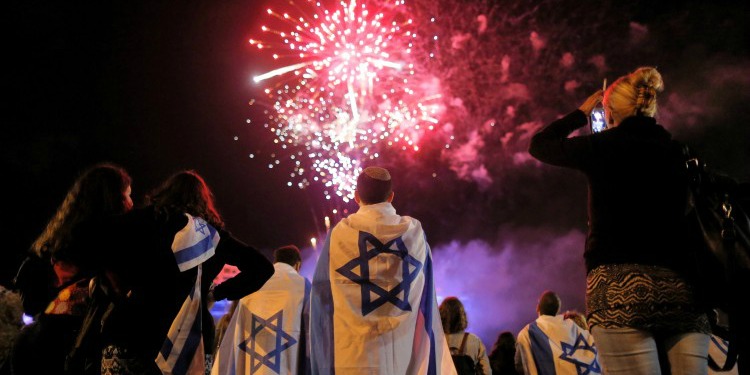
Rosh Hashanah celebration
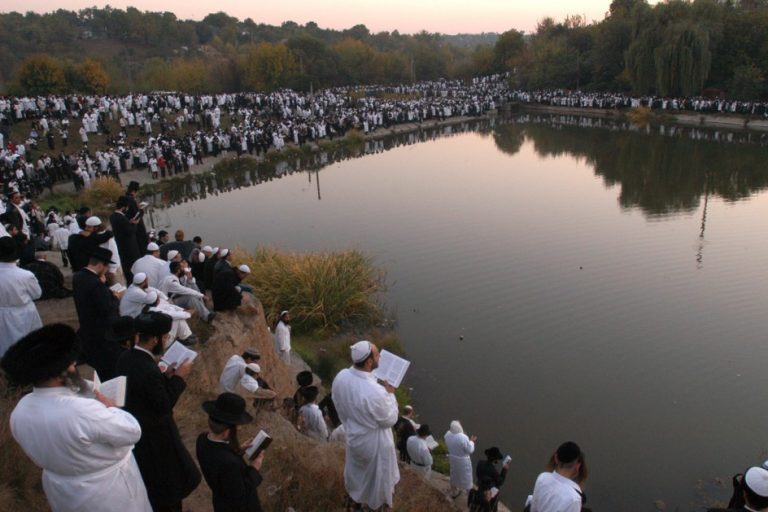
The Custom of Tashlich on Rosh Hashanah The word “Tashlich” means “You will cast away.” In this context, it refers to a custom dating from at least as early as the fourteenth century, but probably much earlier, based on the last verses of the Book of Michah (Micah) 7:18-20.
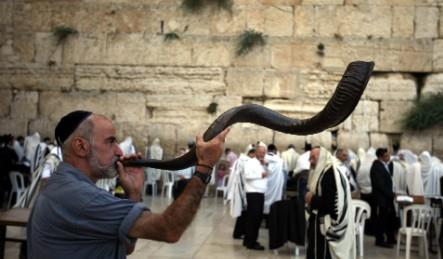
It is time for reflection and repentance and is referred to as the “day of judgement” or the “day of repentance”. One of the most significant rituals of the holiday is the blowing of the shofar, or ram`s horn. It is used as a call to repentance during the High Holy Days.
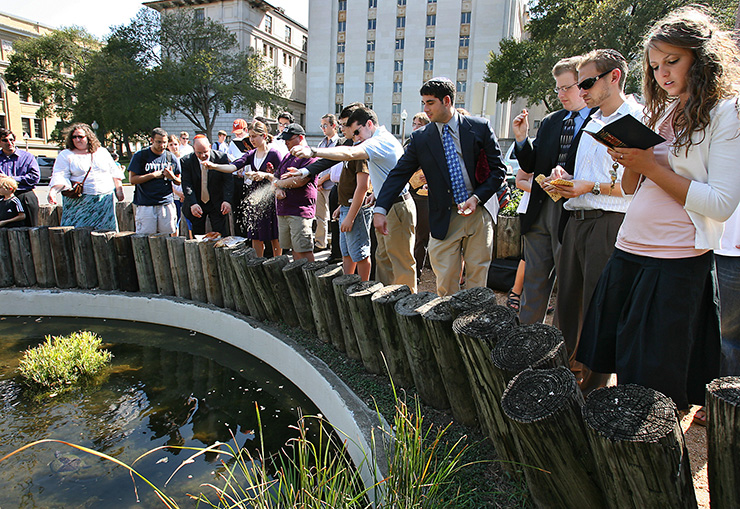
The ritual of Tashlich – the symbolic casting away of one’s sins
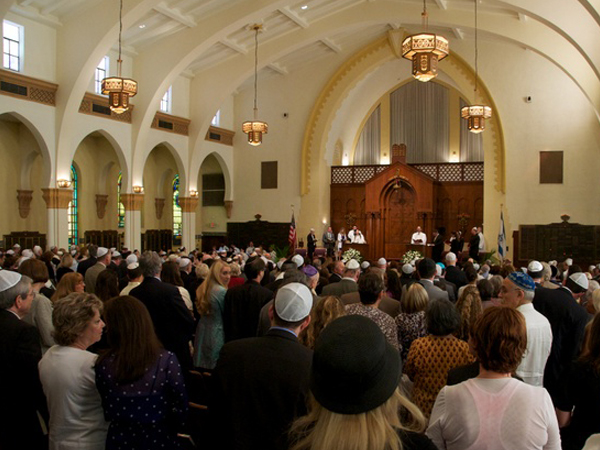
Celebration of Rosh Hashanah in the Temple Israel of Miami
The video gives some practical steps on how to celebrate Rosh Hashana.


